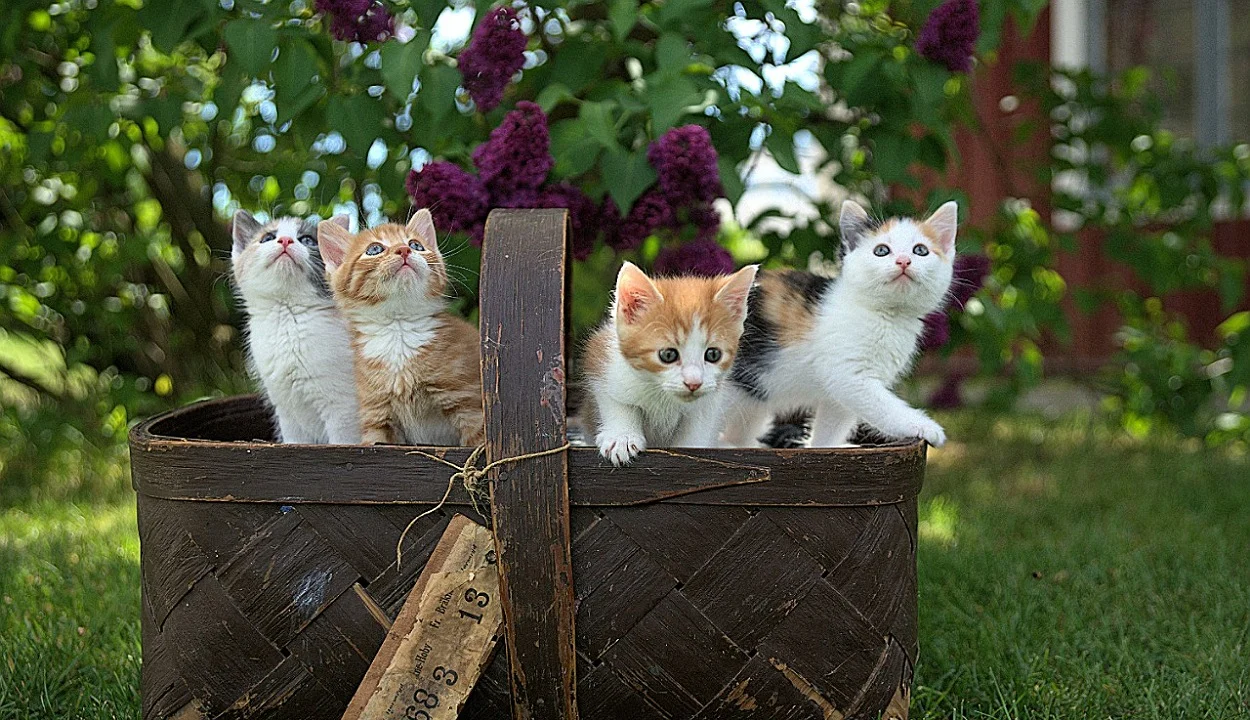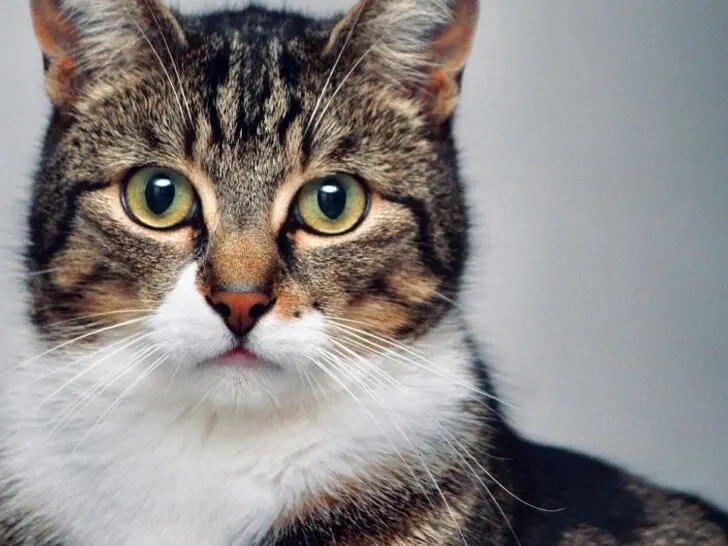Before adopting a new cat, you must make a lot of decisions. Which is better, a male or a female cat? Male and female cats differ, though both make excellent companions. Many cat owners might discover that they favor one over the other.
Male and female cats may appear slightly different from one another, but they are all cats at their core. However, even a tiny distinction could impact your choice of the cat if you’re trying to make one for your home.
You may have observed that male and female cats don’t look identical if you have seen both. Male and female cats differ significantly from one another, just like humans. Knowing the differences between the genders’ traits and how they will fit into your life and home can be helpful when choosing which gender cat to adopt.
To help prospective cat parents choose a cat wisely, this article will discuss the differences between male and female cats’ characteristics. Whether you assume a male or female, having them neutered or spayed is crucial to avoid unintended kitten litters and heat.
What Are The Differences Between Male And Female Cats?
Before welcoming your new feline friend into your home, new cat parents must make several decisions, the most crucial of which is purchasing a male or female cat.
Although both male and female cats make lovely pets, there can be notable behavioral differences between the sexes. Many cat parents may prefer either of the two cat breeds.
But it’s important to remember that cats that haven’t been spayed or neutered may display unique and dangerous behaviors. If female cats are not spayed or neutered, they are more likely to vocalize excessively when they are in heat and to draw male cats from all over the neighborhood.
If you have cats in your home, spaying or neutering will generally lessen the behavioral differences between male and female cats, making your life much easier.

Three Ways to Determine a Cat’s Gender
Look For Gender-Specific Colorings
Wait a second before you begin lifting tails. There could be a more straightforward method! Most calico cats are indeed female, as you may have heard.
Bright black (or grey) and orange splotches can be seen on calico and tortoiseshell cats. A cat is almost certainly a female if it has both black and orange.
This is because the color is an X-chromosome-linked trait. This means that a female cat (XX) can have two copies of the gene—one orange XB and one non-orange Xb—and develop the colorful coat, whereas male cats (XY), for whom Y is not a chromosome related to color, can only have one copy of the gene.
Another myth is that orange cats are typically male. Each chromosome of a female cat needs to contain one of the two orange genes. This implies that female orange cats are marginally more uncommon than males, though it is not a completely accurate indicator.

Locate the Scrotum.
The male cat’s scrotum (testicles’ sac) is the next most straightforward indicator of gender. When a male cat reaches sexual maturity, the reproductive system is typically visible.
The testicles are typically discernible at a glance on male cats that have not been neutered, making the gender of the cat clear. They are located a few inches below the tail and are typically visible from beneath when the cat is lying on its belly or behind when the bottom is raised.
It can be a little trickier to identify neutered males and kittens. In most neutered male cats, the scrotum is visible, though it is usually smaller and more challenging to see, especially in long-haired cats.
Male kittens have underdeveloped, sometimes hidden testicles. Their scrotum is visible, though.
Compare Genital Openings
You can also compare the genital opening’s shape if you are sexing kittens or are still unsure. Lifting the cat’s tail and taking a backward glance is the simplest way to accomplish this.
Right beneath the tail, there should be a circular opening; that is, the anus. Underneath that will be the genital opening. It is round and located further away from the anus in male kittens. It will resemble a vertical slit and be closer to the anus in female kittens.
Male cats can be compared to colons, while female cats more closely resemble an exclamation point turned upside down. (: vs ¡)
Compared to other animals, cat genitalia is not quite as obvious. The shape, size, and distance of the genitalia from the anus indicate whether a kitten is a boy or a girl.
| MALE BEHAVIOR | FEMALE BEHAVIOR | |
| Friendliness | Yes | No |
| Activity Level | Yes | No |
| Fearfulness | No | Yes |
| Predation | No difference | No difference |
Almost all calicos are female, except those who have Klinefelter’s syndrome. The most likely gender of ginger cats is male. Both genders will exhibit additional hues and patterns.
Of course, if you don’t take some precautions, a female cat might surprise you with a litter of kittens. Other minor distinctions between the sexes exist.
Some other Differences between Male and Female Cats
Temperament
Ultimately, temperament is more influenced by the person than by their gender. Character is more influenced by breed, environment, and personal experience than gender.
Male cats may be more affectionate despite being perceived as being more aggressive. The queen doesn’t dislike cuddling; she demands that it take place according to her terms. She prefers to maintain independence if she needs to set priorities for her kittens.
The male cat may show you affection more frequently because he is more independent and doesn’t have to worry about eventually betraying you.
He’ll leap into your lap at the most unexpected times, rub his head against you, and purr. She will quietly lie next to you when you least expect it, let you stroke her, and then silently vanish.
Territorial Conduct
Female cats typically prefer to stay at home and are content with a smaller territory. Male cats have a propensity for wandering.
Anything within 330 feet of a female cat’s food bowl is her territory. A male may decide that his circle of control is almost a mile wide. A female is more disposed to cede her space to a non-threat.
Both sexes will spray their territory, but a female will typically hold off until she is in heat. An intact tomcat will spread more frequently and aggressively during this time.
Although tomcats generally are more aggressive, a queen can turn heads. This is especially true if she needs to protect a litter of kittens.
Lifespan
Male and female cats are equally capable in this area. A male cat may be slightly more aggressive and, therefore, more likely to put himself in risky situations, but gender has little bearing on a cat’s lifespan.
Also, remember that female cats are more likely to develop urinary tract infections and that pregnancy can result in life-threatening complications. The length of a cat’s life is more influenced by breed, health, heredity, and general nutrition than gender.

Size
A male cat will typically be more significant than a female cat. Of course, this is a generalization that only considers the cats’ breed. A male Siamese cat will be smaller than a female Maine coon cat.
A female cat may be enormous, and a male cat may be tiny, even if the cats are of the same breed. Even a tomcat might notice that his littermate is growing more significant than he is.
Males will typically be more prominent than females, but breed, health, and heredity are all influencing factors.
Frequently Asked Questions
Do Male And Female Cats Get Along?
Remember that relationships between cats typically occur between pairs of cats.
Your cat might not accept another cat just because he liked the first one. These personality differences can significantly impact how well two cats get along.
Do Male Cats Exhibit Greater Affection?
While some male cats have a reputation for being more affectionate, some female cats have been known to spray when in heat.
More often than not, a cat’s behavior will be influenced by the environment in which it is raised and the personality of the pet parent.
Which Is Preferable, Two Male Cats Or One Male And One Female?
Males who are raised together will have their hips joined. You should have no trouble bringing in a male kitten if you already have an adult male.
However, remember that some male and female cats will not tolerate other cats and must be the only kids.
Final Thoughts
- There have been a few reports of physical and behavioral differences between male and female cats.
- However, the personality of each cat ultimately makes the most significant difference.
- Usually, male cats are more significant than female cats.
- According to some studies, female cats are more aggressive toward people and other animals, while male cats are more affectionate, playful, and social.
- However, because of territorial disputes, males are more likely to have urine marks.
- In addition, they have a higher chance of getting urinary tract infections, which may necessitate a special diet or medical care.
- Choosing between a male and female cat is a matter of personal preference and, in many cases, the cat’s irresistibility. Identify this same cat that makes you cry the most, regardless of gender.
Related Articles
Saltwater Crocodile VS Nile Crocodile (Facts)
What Is the Difference Between a Caiman, an Alligator, and a Crocodile? (Difference Explained)
What’s The Difference Between A Piebald Veiled Chameleon And A Veiled Chameleon (Investigated)

